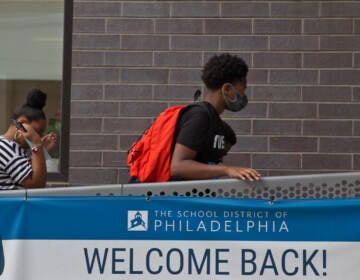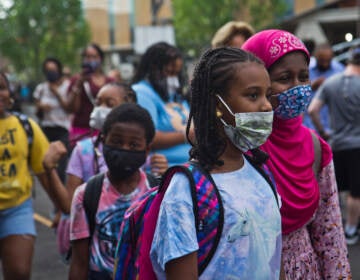Philly schools plan for fall: Two days a week in-person, everyone wearing masks
The plan calls for students to attend classes in school buildings twice a week and completing the rest of their work online. Some students will attend school four days a week.
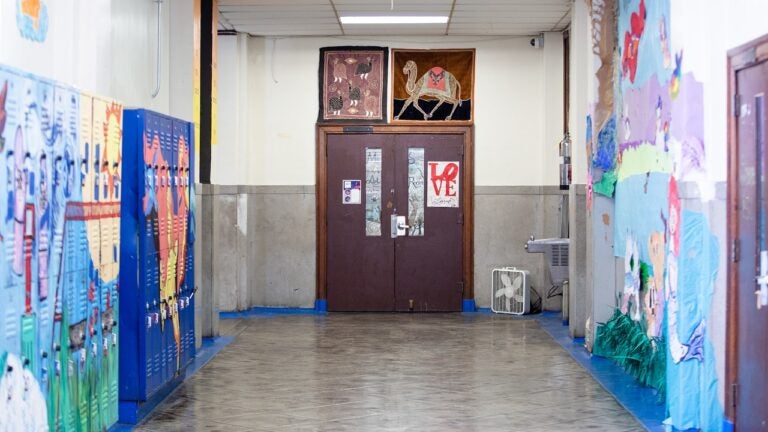
(Office of Gov. Tom Wolf)
Updated: 12:30 p.m.
___
Are you on the front lines of the coronavirus? Help us report on the pandemic.
School District of Philadelphia students will return to school in-person this fall, but on a part-time basis, officials announced Wednesday.
The plan calls for students to attend classes in their respective school buildings twice a week, while completing the rest of their work online. Some high-needs students will have the option to attend school four days a week, as will pre-K students.
Families that don’t feel comfortable sending their children to in-person school can opt for all-virtual instruction, officials said.
The district’s plan also requires increased daily cleanings, including the disinfection of “high-touch” surfaces every four hours. It also mentions the use of fans and outside “air dampers” to increase ventilation within buildings.
Families will be asked to monitor students for signs of sickness, but the district will not conduct daily temperature checks. Staff will have to fill out a “pre-entry screening form” before entering the building each day that asks about symptoms and contact with COVID-19 carriers. Families will also be “required” to do daily health checks of students and will be asked to commit to keeping sick children home.
There is no plan to provide regular coronavirus testing for asymptomatic staff or students, according to city health commissioner Dr. Thomas Farley, who said that idea simply was not practical.
Per the new plan, teachers are expected to provide in-person instruction four days a week. School staff is required to wear a mask at all times while in its school buildings, as are students. The district will also provide face shields for students and teachers in pre-K through fifth grade to help those who “rely on visual and facial cues.”
The plan’s social-distancing guidelines ask that people remain six feet apart at all times “to the extent possible.” District officials say that in an average classroom there will be 12 to 15 students, with a cap of 25.
Classes are slated to begin Sept. 2, pending school board approval of a calendar change.
“This new normal will not be simple or easy,” said Superintendent William Hite. “But, as I’ve said before, the best way to work through a crisis is together. Advancing education safely in the new year will take all of us doing our part.”
Unlike the virtual schooling that occurred in the spring, faculty will grade student work and keep attendance.
Buy-in?
The unanswered question is whether parents and staff will buy into the district’s plan, which has been telegraphed for weeks.
The Philadelphia Federation of Teachers (PFT) — which represents teachers, nurses and other school staff — tentatively endorsed a “hybrid” learning plan that includes some face-to-face instruction and some online instruction. But the PFT said its members preferred a plan where students attended in-person for a full week and then completed the following week online.
Across the country, school officials are trying to balance a slew of competing interests amid a viral outbreak that shows no signs of slowing.
Many view reopening schools as a precondition to reopening economies, largely because working parents rely on schools to care for their children during the workday.
There’s also tremendous educational pressure to provide in-person lessons.
When classes went virtual in the spring, districts across the country, including Philadelphia, saw participation rates drop. From early May to mid-June, only about two-thirds of Philadelphia public school students participated in online learning each week, according to district data. And there’s evidence that low-income children have been hurt the most by the pivot to online instruction.
Layer onto that the fact that several European countries have recently reopened schools without prompting a spike in coronavirus cases — a fact perhaps tied to the notion that children do not contract or spread this specific disease at high rates.
It is the adults who work in school buildings, however, who may be most at risk in any return-to-class plan — in addition to students’ family members. And the European countries that have reopened schools have done so after tamping down their coronavirus outbreaks.
Many Philadelphia school teachers point out that their buildings are rarely clean, even under normal circumstances.
Can a school district that’s struggled to abate asbestos be trusted to fight an invisible virus?
Some school districts — many in coronavirus hotspots — have already decided to start the school year online. A New York Times analysis recently found that most of the country’s large school districts are in areas where more than 5% of coronavirus tests are coming back positive. Many epidemiologists believe a community should be below the 5% threshold before reopening schools and other facets of society.
In recent weeks, Philadelphia has hovered right around that 5% mark, only further muddying the decision for district leaders.
Farley, the city’s health commissioner, said the school district could go all-virtual again, but he did not give a specific scientific threshold for making that decision. He said that ruling would follow a rise in cases, along with a determination that schools were contributing to the rise.
How to staff?
The reopening plan released Wednesday provides some high-level guidelines, but many details remain unclear.
Among them: How will the district staff this plan?
Hite said that will depend on the number of students who opt for all-virtual learning, the number of staff unable to teach in-person, and a subsequent matching process. The district may have to hire extra teachers, Hite said.
Teachers will be required to conduct classes face-to-face, the superintendent added, unless they have a medical condition that precludes them from doing so. There will be a process for receiving an exemption, Hite said, that involves providing medical proof.
The district believes its reopening plan will cost more than $60 million and as much as $80 million. Hite hopes a proposed federal stimulus will help cover those costs.
The district did consider a return to full-time, in-person school for students in elementary school, Hite added, but determined that the district couldn’t afford it.
School district officials are also in the process of determining which physical spaces don’t have the type of ventilation necessary to support in-person learning.
Hite said it’s possible some schools will be considered “unusable,” though he suspects in most cases officials will simply rule out specific parts of a school building.

Get daily updates from WHYY News!
WHYY is your source for fact-based, in-depth journalism and information. As a nonprofit organization, we rely on financial support from readers like you. Please give today.

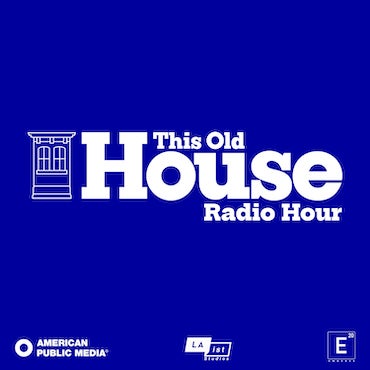

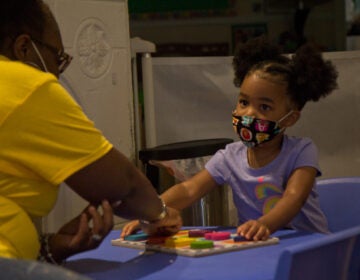
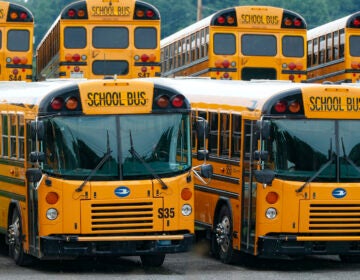
![CoronavirusPandemic_1024x512[1]](https://whyy.org/wp-content/uploads/2020/03/CoronavirusPandemic_1024x5121-300x150.jpg)
